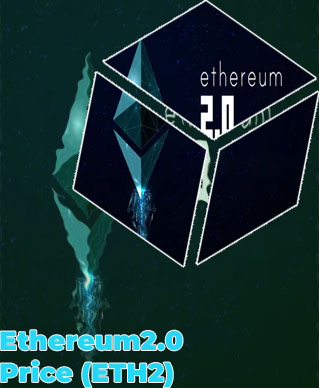
The price of Eth2.0 has been a hot topic of discussion in the cryptocurrency community, with many investors and traders keen to understand the factors influencing its value. To help shed light on this issue, we have curated a list of 3 articles that provide valuable insights into the price dynamics of Eth2.0. These articles cover various aspects such as market trends, technological developments, and regulatory updates that could impact the price of Eth2.0.
These articles cover various aspects such as market trends, technological developments, and regulatory updates that could impact the price of Eth2.0.

The articles presented here delve into a wide array of topics crucial to understanding the dynamics that influence the valuation of Eth2.0. Market trends play a significant role in shaping the price movement of any asset, and Ethereum 2.0 is no exception. By keeping a close eye on market trends, investors can gain valuable insights into potential price fluctuations and make informed decisions.
Moreover, technological developments are key drivers of innovation within the cryptocurrency space. Eth2.0 is undergoing significant technological changes that could have a profound impact on its price in the future. Understanding these developments is essential for anyone looking to navigate the volatile world of digital assets.
Regulatory updates are another critical aspect to consider when assessing the price of Eth2.0. The regulatory environment surrounding cryptocurrencies is constantly evolving, and changes in legislation can have far-reaching effects on the market. Staying abreast of these updates is vital for investors seeking to mitigate risks and make sound investment choices.
In conclusion, these articles provide valuable insights into the various factors that can influence the price of Eth2.0. By examining market trends, technological developments, and regulatory updates, readers can gain a comprehensive understanding of the forces at play in the Ethereum 2.0 ecosystem.
Understanding the Price Volatility of Eth2.0: An In-depth Analysis
The launch of Eth2.0 has caused a stir in the cryptocurrency community, with many investors eager to understand the price volatility associated with this upgrade. A recent in-depth analysis shed light on the factors contributing to the fluctuation in the price of Ethereum, post the implementation of Eth2.0.
One key factor impacting the price volatility of Eth2.0 is the increased scalability and security features it offers. The transition from a proof-of-work to a proof-of-stake consensus mechanism has been a game-changer for Ethereum, leading to a surge in investor confidence. This has resulted in a bullish trend in the market, with prices reaching record highs in recent weeks.
Furthermore, the involvement of prominent figures in the cryptocurrency space, such as Vitalik Buterin, has also played a significant role in boosting the price of Ethereum. Buterin's vision for a decentralized and scalable blockchain platform has garnered immense support from the community, driving up demand for Ether tokens.
Additionally, the integration of decentralized finance (DeFi) applications on the Ethereum network has further fueled price volatility. The rise of popular DeFi projects like Uniswap and Aave has attracted a massive influx of funds into the ecosystem, leading to increased trading volumes and price fluctuations.
Overall, the launch of Eth2.
The Impact of Upcoming Eth2.0 Upgrade on Price Prediction Models
The highly anticipated upgrade to Ethereum's network, Eth2.0, is poised to have a significant impact on price prediction models within the cryptocurrency space. This major upgrade is expected to bring about several key changes that could potentially shift the dynamics of how Ethereum is valued and traded on the market.
One of the most crucial aspects of the Eth2.0 upgrade is the transition from a proof-of-work (PoW) to a proof-of-stake (PoS) consensus mechanism. This switch is expected to make Ethereum more energy-efficient and scalable, which could lead to increased transaction speeds and lower fees. As a result, these changes could fundamentally alter the way in which price prediction models analyze and forecast the value of Ethereum.
In addition to the shift in consensus mechanism, Eth2.0 is also set to introduce sharding, which is a method of partitioning data to improve network performance and scalability. This enhancement could further enhance Ethereum's capabilities and potentially impact how price prediction models interpret and forecast market trends.
Furthermore, the upgrade is expected to bring about improvements in security and decentralization, which could influence the overall perception of Ethereum within the crypto community. These changes could lead to a reevaluation of current price prediction models and the development of new strategies to account for the evolving nature of
Regulatory Challenges and Their Effect on Eth2.0 Price Movement
The regulatory landscape surrounding Ethereum 2.0 (Eth2.0) has been a topic of significant discussion in the cryptocurrency community. As governments around the world grapple with how to classify and regulate digital assets, the uncertainty surrounding Eth2.0 has had a notable impact on its price movement.
-
Increased regulatory scrutiny: The rapid rise of decentralized finance (DeFi) platforms built on Ethereum has caught the attention of regulators globally. Concerns about money laundering, tax evasion, and investor protection have led to calls for stricter oversight of the cryptocurrency industry.
-
Legal ambiguity: The lack of clarity on how existing financial regulations apply to Ethereum and other cryptocurrencies has created a challenging regulatory environment. This uncertainty has made it difficult for investors and developers to navigate the legal landscape and has led to increased market volatility.
-
Market reaction: News of regulatory crackdowns or proposed legislation has often resulted in sharp price fluctuations in the cryptocurrency markets, including Eth2.0. Traders and investors closely monitor regulatory developments to assess the potential impact on the price of Ethereum and other digital assets.
-
Compliance costs: Compliance with evolving regulatory requirements can be costly for cryptocurrency exchanges, DeFi platforms, and other market participants. The need to implement robust anti-money laundering and know-your-customer
